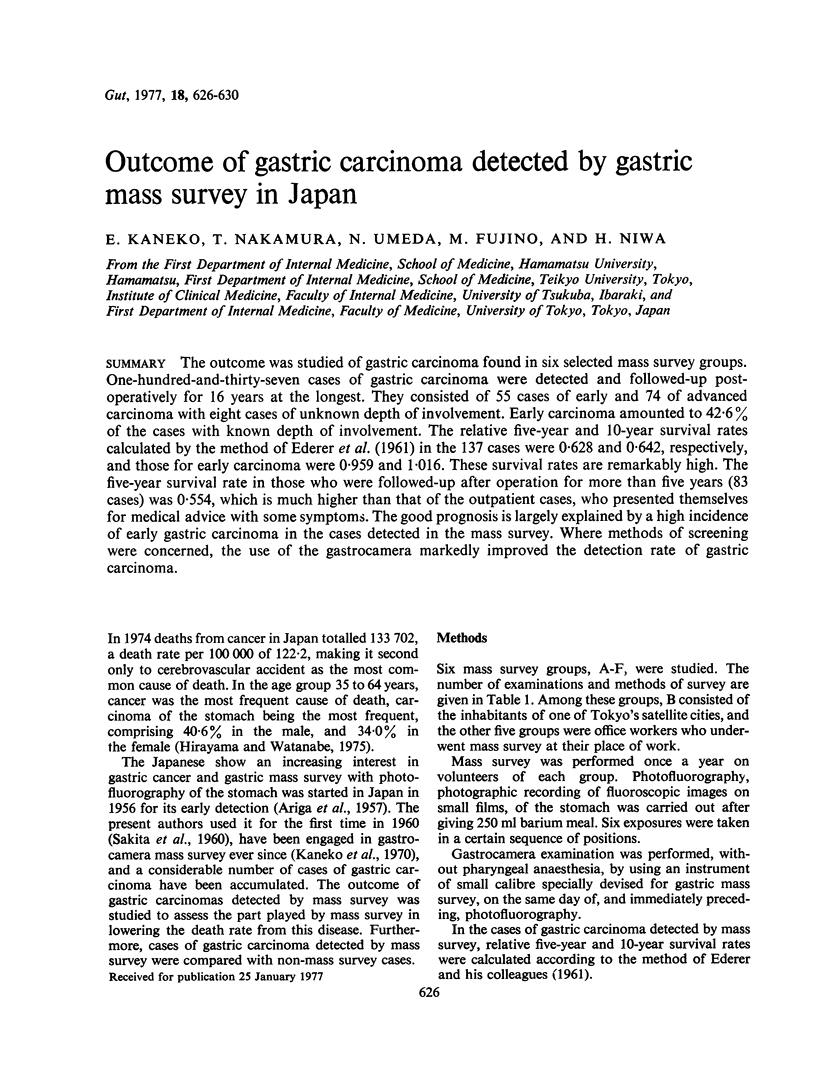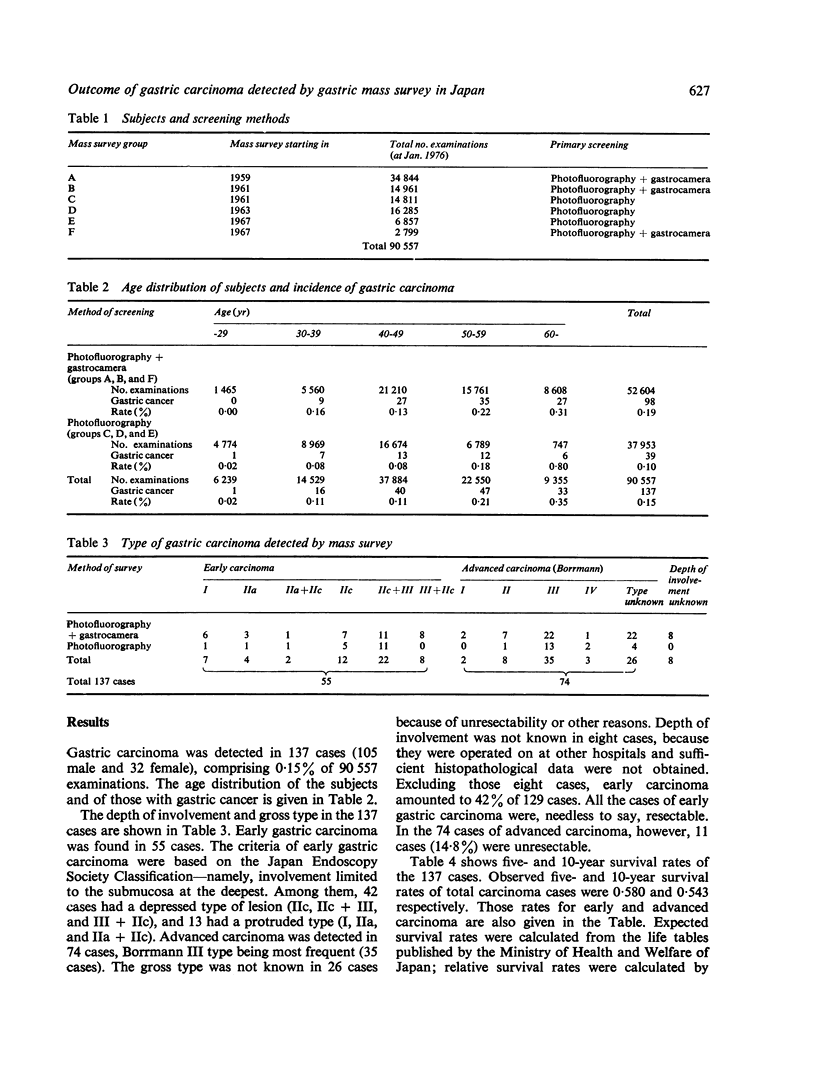Abstract
The outcome was studied of gastric carcinoma found in six selected mass survey groups. One-hundred-and-thirty-seven cases of gastric carcinoma were detected and followed-up postoperatively for 16 years at the longest. They consisted of 55 cases of early and 74 of advanced carcinoma with eight cases of unknown depth of involvement. Early carcinoma amounted to 42-6% of the cases with known depth of involvement. The relative five-year and 10-year survival rates calculated by the method of Ederer et al. (1961) in the 137 cases were 0-628 and 0-642, respectively, and those for early carcinoma were 0-959 and 1-016. These survival rates are remarkably high. The five-year survival rate in those who were followed-up after operation for more than five years (83 cases) was 0-554, which is much higher than that of the outpatient cases, who presented themselves for medical advice with some symptoms. The good prognosis is largely explained by a high incidence of early gastric carcinoma in the cases detected in the mass survey. Where methods of screening were concerned, the use of the gastrocamera markedly improved the detection rate of gastric carcinoma.
Full text
PDF




Selected References
These references are in PubMed. This may not be the complete list of references from this article.
- EDERER F., AXTELL L. M., CUTLER S. J. The relative survival rate: a statistical methodology. Natl Cancer Inst Monogr. 1961 Sep;6:101–121. [PubMed] [Google Scholar]


